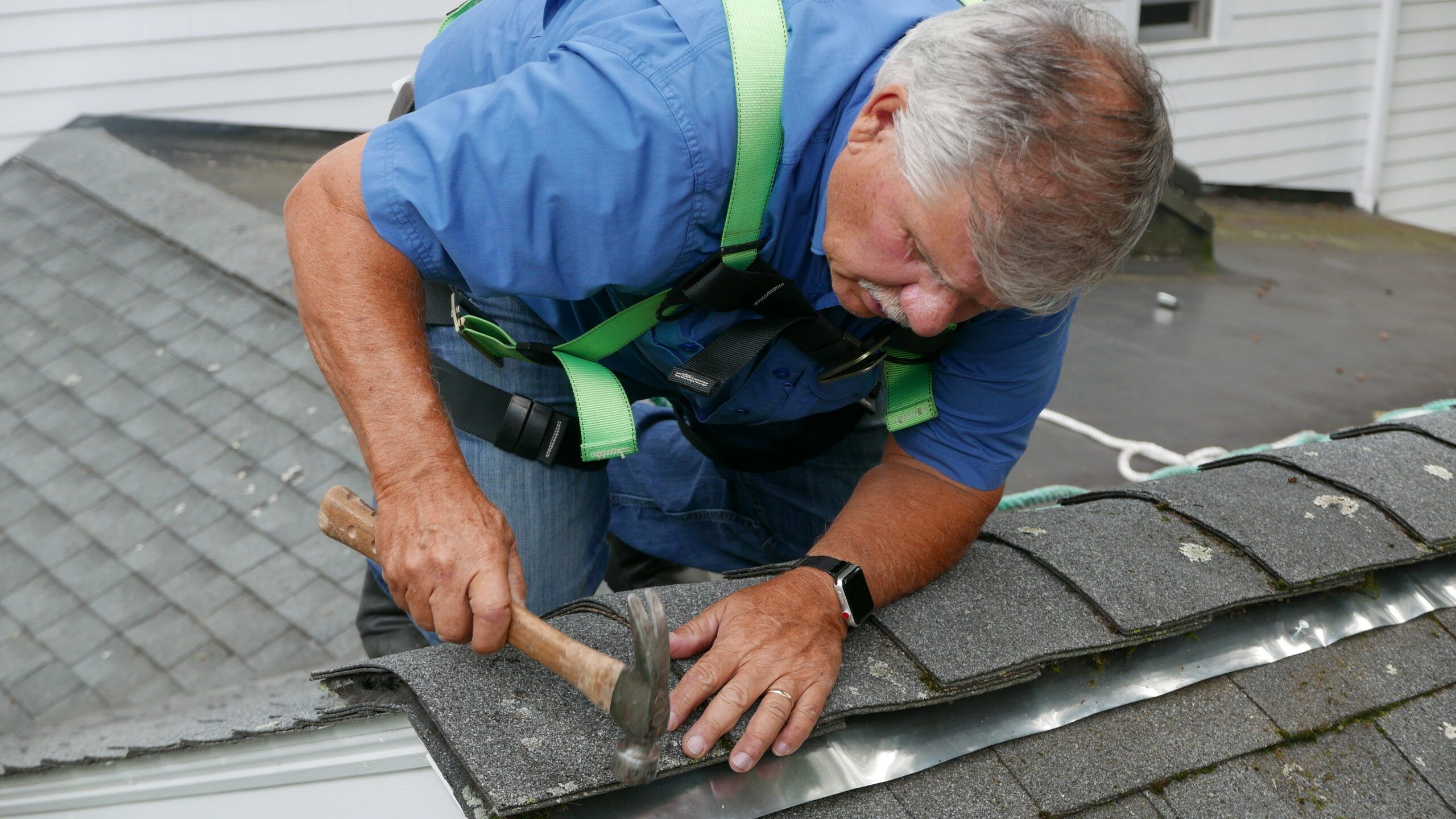Q: What causes the mold on my roof? How can I get rid of it? How can I keep it from coming back?
— Trudy, Muskegon, Michigan
What is Roof Algae?
A: Mold on your roof isn’t actually mold; it’s algae. Algae is a collection of tiny organisms that make food from sunlight. On roofs, it commonly appears as mold-like stains and streaks. Algae can grow in any climate but is most prevalent in areas with warm, humid summers.
Algae may just seem like a cosmetic issue, but it can also lead to moisture retention on your roof, damaging shingles and underlying structures. Over time, this can cause leaks and reduce your home’s energy efficiency.
DIY Methods To Remove Roof Algae
If you’re comfortable with do-it-yourself (DIY) projects, there are several ways to remove roof algae. Each method is best performed on a calm, overcast day.
Bleach and Water
A 50-50 mixture of water and bleach can kill algae effectively. Spray the solution on the affected areas, let it sit for 15–20 minutes, then rinse thoroughly with clean water. This is a potent method, but it requires careful handling to prevent collateral damage. Be sure to wear safety gear and protect any surrounding plants.
Vinegar and Water
Vinegar is less potent than bleach, but if you have a mild roof algae problem, it can work well while being less harsh on your shingles and the environment. Mix equal parts white vinegar and water, spray it on the affected areas, let it sit for 15–20 minutes, and rinse with water.
Commercial Roof Cleaning Products
There are many commercial products designed specifically for roof cleaning. They often contain algaecides and can be more effective than homemade solutions for stubborn algae growth. Be sure to read the labels carefully and follow the manufacturer’s instructions to prevent damage to your shingles and surroundings. Check out our guide on roof cleaning costs for more information.
Tools and Safety Equipment for Roof Algae Removal
If you decide to tackle algae removal yourself, be sure to have this equipment on hand:
- A garden sprayer or pressure washer (set to low pressure)
- Cleaning solution
- Ladder
- Protective eyewear and gloves
- Safety harness and non-slip shoes
- Soft-bristled brush or broom
Professional Algae Removal Services: When To Call the Experts
While many algae problems are easily handled yourself, there are still times when it’s best to bring in the pros. This applies in the following circumstances:
- The algae growth is extensive or resists DIY cleanup methods.
- Your roof is particularly steep.
- You’re uncomfortable working with heights.
Professional algae removal teams have the tools and experience to safely and effectively remove algae without damaging your roof. They can also suggest and implement strategies to prevent future algae growth. Hiring a professional may cost more upfront but can leave you with longer-lasting results.
Prevention Strategies: Keeping Algae at Bay
Preventing algae growth is often easier and more cost effective than removing it. Here are some strategies to prevent algae in the future.
- Install algae-resistant shingles: These shingles are infused with copper granules toxic to algae, and can stay effective for years.
- Install zinc or copper strips: Install 6-inch-wide zinc or copper strips under the row of shingles closest to the roof peak, leaving an inch or two exposed. When it rains, metal molecules will wash down the roof, inhibiting algae growth.
- Improve roof ventilation: Good ventilation helps keep your roof dry and makes it inhospitable for algae. It also keeps your home’s temperature in balance and reduces the risk of mold growth.
- Keep up with regular roof maintenance: Removing debris from your roof and addressing moisture issues promptly will curb algae growth.
- Trim overhanging branches: Less debris and moisture from overhanging branches means fewer opportunities for algae to grow.
Climate plays a significant role in algae growth. Warm, humid climates are particularly prone to algae problems, so you may need to clean your roof more often or invest in stronger algae prevention if you live in one.
Our Conclusion
Roof algae can be stubborn, but it’s manageable with the right approach. Regular maintenance, preventive measures, and prompt treatment can keep your roof looking great and functioning properly.

